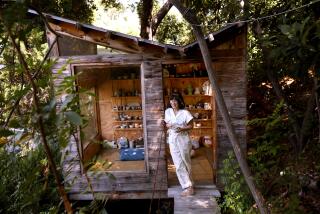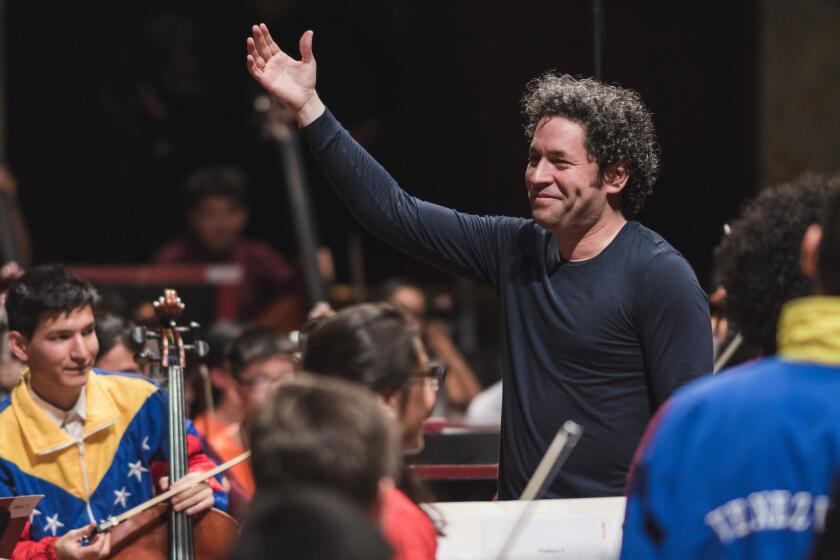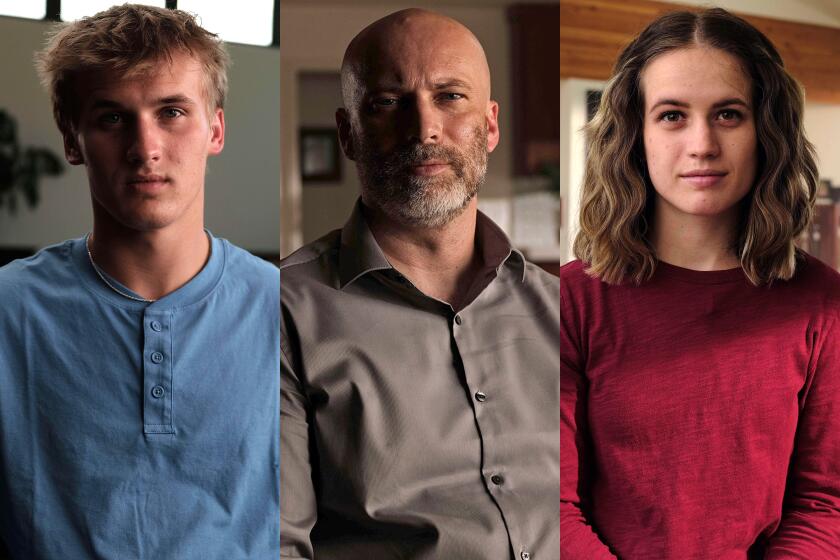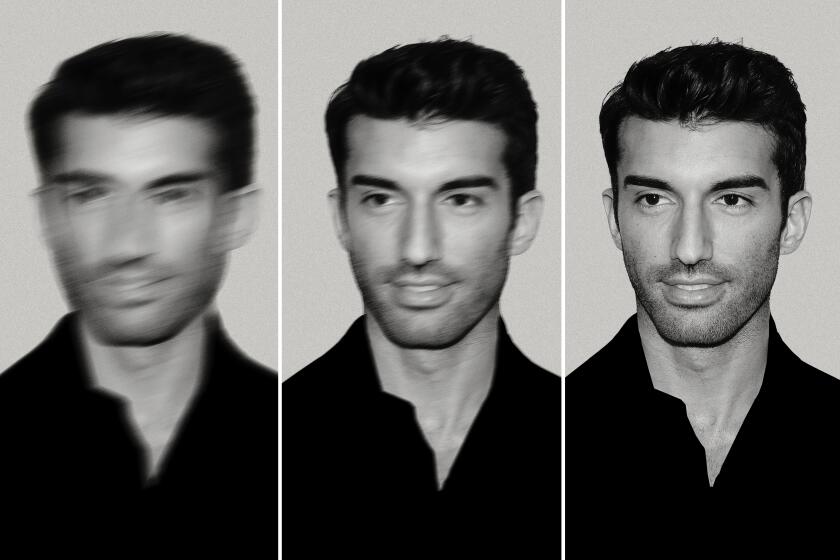Grand Illusions : The Technique of Trompe l’Oeil--Art for Artifice’s Sake--Is Making a Comeback as a Decorating Device
- Share via
For all its Gallic guile, trompe l’oeil is as old as Pompeii. Employed by the Romans, who painted statues and gar den vistas on courtyard walls, such artistic artifice enjoyed renewed popularity during the Renaissance, when buildings were embellished with painted columns and passageways. Illusionist painting was later embraced by the Flemish masters of the 18th Century who--being the first to render objects with unerring detail--initiated the extreme realism that became the hallmark of classic trompe l’oeil.
This deceptive style of painting--”trick of the eye” in French--depicts architectural details and scenes from nature so realistically that they seem three-dimensional. Trompe l’oeil is a provocative art form that’s rich in imagery and illusion.
It is also an enduring medium that has survived the vagaries of fashion. Trompe l’oeil was revived again in this century by the surrealist movement; Salvador Dali and Rene Magritte employed the technique in their disturbing, dreamlike paintings. Today it is making another comeback, as a popular decorating device. Smaller living spaces and the high cost of architectural detailings are partly responsible. So is the renewed appeal of neoclassicism, which derives its style from some of history’s oldest design motifs. To satisfy demand for this look, design firms are turning out a variety of fabrics and wallpapers that echo the best of trompe l’oeil .
Trompe l’oeil can make the old look new or the new look ancient. It can transform plain surfaces into areas of exotic marbles or antique tiles. It can “add” such details as moldings and columns to rooms where none exist, or--by transforming a wall into an outdoor landscape--it can “expand” space.
The process of trompe l’oeil can be as varied as its motifs. Strong outlines, shadows, cutaway shapes and true-to-size images are all part of the technique. Each artist offers a personal interpretation: Some are traditional, producing work so realistic that, rather than trust what you see, you want to reach out and touch it; others are playful, concerned more with fun than foolery and unperturbed if their images look less than real.
Of the artists whose work is pictured on these pages, some use oils, others use acrylics. Most work by commission through interior designers.
“Give me a wall to paint and I’m happy,” says artist John Parker, who during the past 25 years has done about everything that can be done with trompe l’oeil . Known for his choice of colors, meticulous style and romantic point of view, he has painted windows on walls and zebra and leopard skins on wooden floors; he has re-created the inside of kitchen cabinets by painting on the cupboard doors the very cups and saucers to be found within.
A native of Virginia, Parker came to Los Angeles to study painting and costume design at Chouinard, now the California Institute of the Arts. After working in display at Robinson’s and Bullock’s, he headed for New York, where he continued to work in display while pursuing a career in painting. It was his painting that led to an interest in trompe l’oeil . As he recalls, “Bill Blass, the fashion designer, bought one of my works and then asked me to paint something in his home. I did a jungle scene in his breakfast room and then painted a leopard rug on his living-room floor.”
Bruce Tunis, known for his landscapes on the clubhouse walls at Santa Anita, has also designed trompe l’oeil murals for the refurbished Hotel Roosevelt and for the Lawry restaurant chain, such as the faux tapestry at Lawry’s Prime Rib on La Cienega Boulevard. Tunis recently turned a sober-looking Silver Lake apartment building into a Spanish delight by painting columns, a balcony and a circular window on its facade.
Tunis excels at turning interior walls into jungle and garden landscapes and often imbues his work with an Art Deco flavor. He has painted rambling roses on kitchen tiles, dinner plates on table-tops and floating clouds on bedroom ceilings. In children’s rooms, he decorates walls with images of such characters as Mickey Mouse, Pluto, Batman, Miss Piggy and Babar the Elephant.
Tunis studied painting, sculpture and ceramics at Chouinard. For a few years he worked at the May Co., where he did window displays and painted murals. Today, working out of a studio in his home, he paints trompe l’oeil designs on canvas, furniture and wooden cubes. The cubes are functional as well as artful. “You can view them as three-dimensional paintings or use them as furniture. My idea is to make trompe l’oeil versatile and portable.”
Artist and actor Stephen Solsberg often designs the sets and backdrops for the plays in which he performs. He specializes in turning ordinary objects and surfaces into exquisite facsimiles. An example is his paint-splattered table. Up close it resembles an Expressionist painting. Step back a few feet and it looks like marble.
Solsberg says he’ll use anything to achieve the effects he’s after. That can mean painting with ratty old brushes, crumpled tissue paper or sponges. “What I like about trompe l’oeil ,” the Chouinard graduate says, “is that it makes the mind question what the eye is seeing. It’s a visual pun. It’s never offensive or pretentious. It’s always amusing and unexpected. It might not appeal to everyone, but I’ve found that most skeptics usually end up loving it.”
Although Robert Lane has painted moldings as well as window frames and columns in rooms where none exist, he is known for his novel wall treatments. Using a process called “rag-rolling”--applying paint with fabric--he has given ordinary walls the look of marble, old velvet, wrinkled leather, suede, even ostrich skin.
Lane has often been asked to paint abstract and floral patterns on living-room and kitchen walls. He has sometimes extended these patterns off the wall and across the floor, furniture and upholstery, with startling results.
An interior designer as well as an artist, Lane studied art and design at Woodbury College. After painting fabrics for several years, he moved on to painting murals in the homes that he was decorating. In collaboration with artist Arturo Bardewick, he recently transformed all the walls in a Hancock Park home into trompe l’oeil . As he explains it, “The house had classic proportions and lots of arches but very little character. There were no moldings, no baseboards, no architectural details. We decided to make the rooms look grander by giving them all the detail of a Mediterranean villa.” Lane and Bardewick accomplished this by painting window frames, columns and wall panels and then treating them to resemble marble and malachite.
One of the most sought-after teams in the business, Nicki Diatz and Debi Schroth of The Painted Look, are known for their wit and speedy brushwork. Often taking as little as a day, and usually no more than three, to create their special effects, they have transformed entryways into Renaissance courts, kitchen cabinets into chicken coops, and children’s rooms into fairy-tale and street tableaux. Says Diatz: “We’re successful because we think like decorators. Trompe l’oeil or decorative painting only succeeds when it doesn’t overshadow what’s already been done. We like to think of it as an accessory.” PRODUCED BY ANA ERICKSEN
More to Read
The biggest entertainment stories
Get our big stories about Hollywood, film, television, music, arts, culture and more right in your inbox as soon as they publish.
You may occasionally receive promotional content from the Los Angeles Times.










